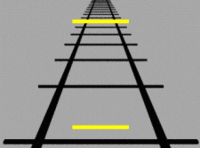
Photo from wikipedia
Perceiving and grasping an object present an animal with different sets of computational problems. The solution in primates entails the specialization of separate neural networks for visual processing with different… Click to show full abstract
Perceiving and grasping an object present an animal with different sets of computational problems. The solution in primates entails the specialization of separate neural networks for visual processing with different object representations. This explains why the Ebbinghaus illusion minimally affects the grasping hand's in-flight aperture, which normally scales with target size, even though the size of the target disc remains misperceived. An attractive alternative account, however, posits that grasps are refractory to the illusion because participants fixate on the target and fail to attend to the surrounding context. To test this account, we tracked both limb and gaze while participants made forced-choice judgments of relative disc size in the Ebbinghaus illusion or did so in combination with grasping or manually estimating the size of one of the discs. We replicated the classic dissociation: grasp aperture was refractory to the measured illusory effect on perceived size, while judgments and manual estimates of disc size were not. Importantly, the number of display-wide saccades per second and the percentage of total fixation time or fixations directed at the selected disc failed to explain the dissociation. Our findings support the contention that object perception and goal-directed action rely on distinct visual representations. This article is part of a discussion meeting issue ‘New approaches to 3D vision’.
Journal Title: Philosophical Transactions of the Royal Society B: Biological Sciences
Year Published: 2022
Link to full text (if available)
Share on Social Media: Sign Up to like & get
recommendations!